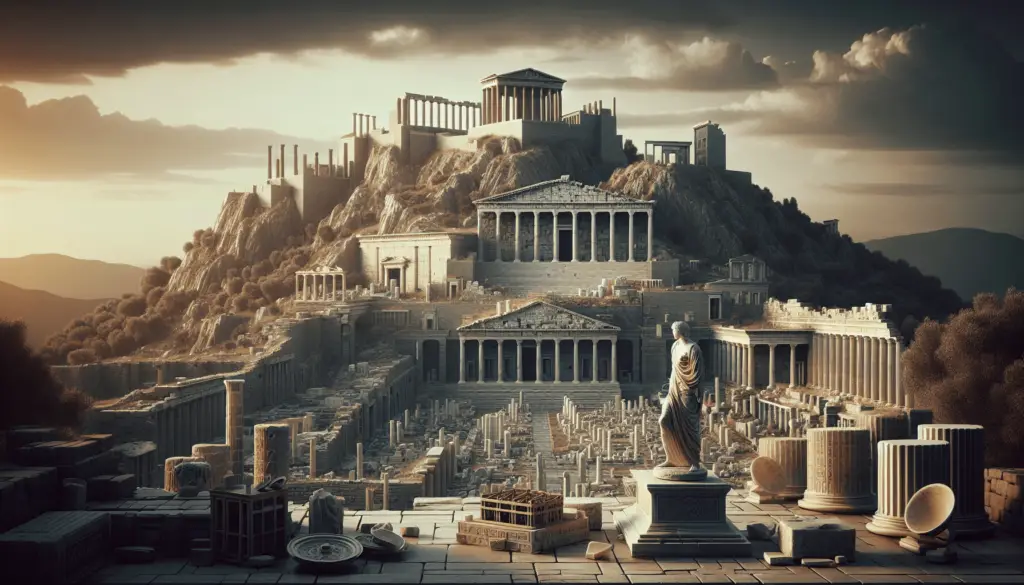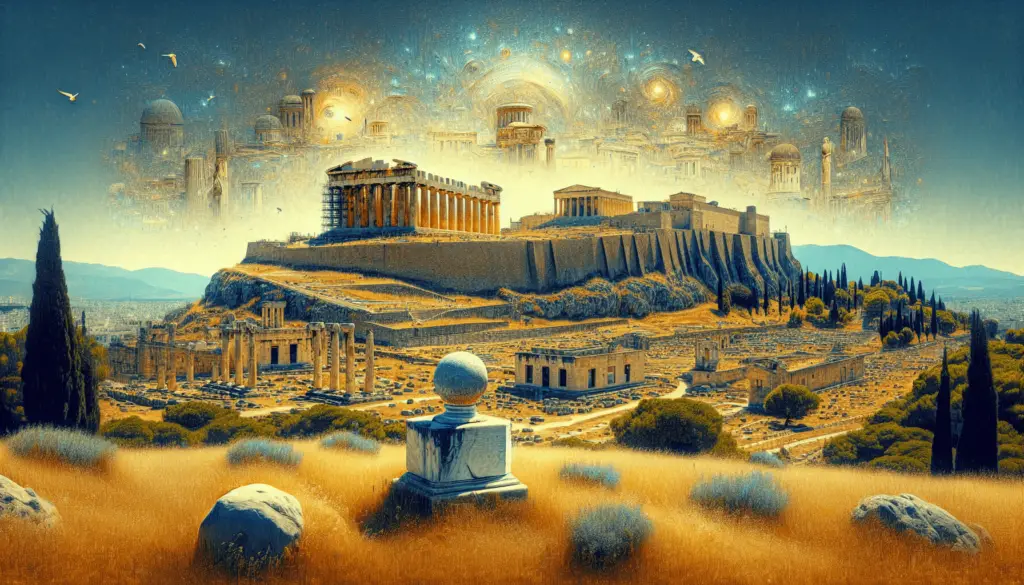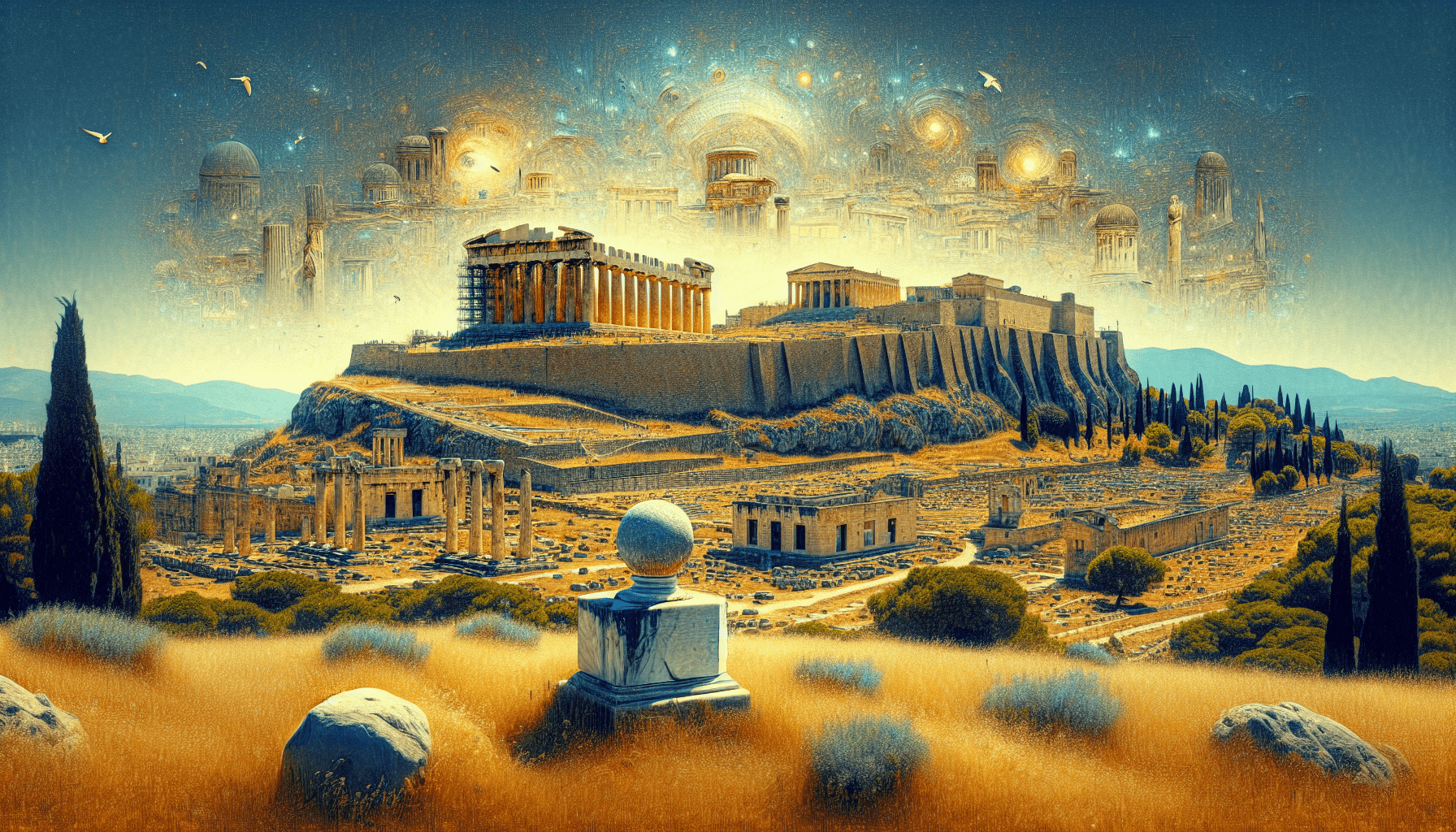Once a bustling metropolis in ancient times, the legendary city of Pergamon continues to captivate the imagination with its fascinating ruins. Located in modern-day Turkey, this remarkable city, known for its majestic architecture and rich history, stands as a testament to the ingenuity and legacy of its inhabitants. From the imposing remains of the Acropolis to the impressive theater, a visit to Pergamon offers a unique opportunity to step back in time and explore the remnants of a bygone era. Whether you are a history enthusiast or simply curious about the past, the enchanting ruins of Pergamon promise an unforgettable experience.
https://www.youtube.com/watch?v=zjOfz9fgRmg[/embedyt]
Introduction to Pergamon
Welcome to the legendary city of Pergamon! Situated in modern-day Turkey, Pergamon is an ancient city that boasts a rich and fascinating history. From its geographical location to its historical significance and archaeological importance, this city has so much to offer for those seeking a glimpse into the past.
Geographical Location
Pergamon is nestled in the western part of Turkey, overlooking the Aegean Sea. Its strategic position atop a hill allows for breathtaking panoramic views of the surrounding landscape. The city is located approximately 20 miles from the modern city of Bergama, making it easily accessible for visitors from different parts of the country.
Historical Significance
Pergamon’s rise to prominence began in the Hellenistic period, around the 3rd century BC. Under the rule of the Attalid dynasty, Pergamon became a powerful and influential city-state in the region. The city’s strategic location provided it with protection and stability, allowing it to flourish politically, economically, and culturally.
Archaeological Importance
As an archaeological site, Pergamon is renowned for its well-preserved ruins that provide a window into its glorious past. The city boasts an impressive array of ancient structures, including the Acropolis, the Theater, the Library of Pergamon, the Temple of Trajan, the Altar of Zeus, the Gymnasium, and the Temple of Dionysus. These ruins offer invaluable insights into the architectural and cultural achievements of the ancient world.
Exploring the Ruins of Pergamon
The Acropolis
The Acropolis of Pergamon is a must-visit site for anyone interested in ancient history. Perched on a hilltop, it offers a stunning view of the city and its surroundings. The remains of the Temple of Athena, the Altar of Zeus, and various other structures can be found here. As you wander through its ancient ruins, you will be transported back in time, marveling at the craftsmanship and grandeur of this once-thriving city.
The Theater
One of the most impressive structures in Pergamon is its Theater. Built into the hillside, it could accommodate up to 10,000 spectators and was renowned for its exceptional acoustics. Imagine yourself sitting among the crowds, as you immerse yourself in the atmosphere and imagine the performances that once took place on this historic stage.
The Library of Pergamon
The Library of Pergamon, also known as the Pergamon Library, was one of the most renowned libraries of the ancient world. It housed thousands of scrolls and manuscripts and rivaled the Library of Alexandria in its heyday. Although the original library no longer exists, its remnants are a testament to the city’s intellectual prowess.
The Temple of Trajan
Dedicated to the Roman Emperor Trajan, the Temple of Trajan stands as a testament to the city’s Roman influence. Its majestic columns and intricate architectural details showcase the skill and craftsmanship of the ancient architects and craftsmen.
The Altar of Zeus
One of the most iconic structures in Pergamon is the Altar of Zeus. This monumental altar, adorned with intricate friezes depicting epic battles and mythical scenes, showcases the city’s devotion to the gods. The altar’s grandeur and artistic beauty are truly awe-inspiring, making it a highlight for visitors.
The Gymnasium
In ancient times, the Gymnasium served as a center for physical education and intellectual pursuits. It was a gathering place for scholars, athletes, and philosophers, fostering a culture of learning and physical fitness. Today, visitors can explore its ruins and imagine the bustling activities that once took place in this vibrant hub of ancient Pergamon.
The Temple of Dionysus
Dedicated to the Greek god of wine and celebration, the Temple of Dionysus stands as a testament to the city’s religious and cultural practices. Although only a few remnants remain, the temple’s historical significance and the stories it holds are still palpable, giving visitors a glimpse into the spiritual life of the city.

Notable Artifacts and Discoveries
The Pergamon Altar Frieze
One of the most famous artworks from Pergamon is the Pergamon Altar Frieze. This breathtaking sculptural masterpiece showcases the Gigantomachy, a battle between the gods and the giants, and is now housed in the Pergamon Museum in Berlin. Its intricate details and dramatic depictions make it a must-see for art enthusiasts.
The Asklepion Medical Complex
Pergamon was also renowned for its Asklepion, an ancient medical center dedicated to the god of healing, Asklepios. The complex consisted of various buildings, including temples, sleeping halls, and thermal baths. Today, visitors can explore the remnants of this medical complex and gain insights into ancient medical practices and beliefs.
Pergamon in Mythology and Literature
Pergamon in Greek Mythology
In Greek mythology, Pergamon was believed to be the birthplace of several deities, including Zeus, the king of the gods. According to myth, the stone used to build the city’s walls was brought by Zeus himself, making Pergamon a city with divine origins.
Pergamon in Ancient Texts
Pergamon is mentioned in various ancient texts, including the works of renowned Greek writers and historians like Homer and Herodotus. These texts provide valuable insights into the city’s historical and cultural significance, allowing us to piece together the story of Pergamon’s past.

Pergamon’s Influence and Legacy
The Pergamon School of Art
Pergamon’s influence extended beyond its physical structures. The city was renowned for its vibrant artistic community and was home to the Pergamon School of Art, which flourished during the Hellenistic period. The school’s unique artistic style, characterized by dynamic and dramatic sculptures, had a lasting impact on the art world.
The Pergamon Museum in Berlin
Many of Pergamon’s most impressive artifacts and structures now reside in the Pergamon Museum in Berlin, Germany. This world-renowned museum houses a vast collection of ancient treasures, including the Pergamon Altar and the Ishtar Gate from Babylon. The museum’s exhibits allow visitors to experience the grandeur of Pergamon firsthand.
Tourism and Conservation Efforts
Visitor Experience at Pergamon
Visiting Pergamon is a truly immersive experience. As you wander through the ruins, expertly designed pathways and signage guide you through the city’s history and provide context to the structures you encounter. The breathtaking views, coupled with the rich historical significance, create an unforgettable experience for every visitor.
Preservation and Restoration Projects
Preservation and restoration efforts are crucial to ensuring the longevity of Pergamon’s ruins. Conservation teams work tirelessly to protect and maintain the archaeological site, using modern technology and techniques to prevent further deterioration. These efforts ensure that future generations can continue to explore and appreciate the wonders of Pergamon.
Pergamon in Modern Culture
Literary and Film References
Pergamon’s rich history and captivating ruins have inspired various authors and filmmakers. From historical novels to epic films, Pergamon’s allure continues to captivate audiences worldwide. These creative interpretations bring the city’s ancient past to life and spark curiosity and interest in those who may not have had the opportunity to visit in person.
Artistic Interpretations
Pergamon’s architectural beauty and artistic significance continue to inspire artists around the world. Paintings, sculptures, and other artistic works often draw inspiration from the city’s ruins, paying homage to its cultural legacy and influencing contemporary art movements.
Getting to Pergamon
Transportation Options
Pergamon is easily accessible from major cities in Turkey. Visitors can choose to travel by air, with Izmir Adnan Menderes Airport being the closest international airport. From there, a scenic drive or a bus ride takes you to Pergamon. Alternatively, there are also organized tours available that include transportation to and from the site.
Accommodation
For those planning to visit Pergamon, the nearby city of Bergama offers a range of accommodation options to suit every budget. From luxurious hotels to cozy guesthouses, there is something for everyone. Staying in Bergama allows visitors to explore both the ancient ruins of Pergamon and the modern amenities of the city.
Planning a Visit to Pergamon
Best Time to Visit
The best time to visit Pergamon is during the spring and autumn months when the weather is mild and pleasant. The summer months can be hot, so it’s advisable to carry sun protection and stay hydrated. During the off-peak seasons, visitors can enjoy a quieter experience and avoid the crowds.
Itinerary Suggestions
To make the most of your visit to Pergamon, it is recommended to allocate at least a full day to explore the ruins. Start your day early to beat the crowds and take your time to appreciate the intricate details of the ancient structures. Combine your visit with a trip to the Pergamon Museum in Berlin to see some of the city’s most famous artifacts.
Local Customs and Etiquette
When visiting Pergamon, it is important to respect the site’s historical and cultural significance. Be mindful of the rules and regulations in place to protect the ruins, such as not climbing on structures or touching artifacts. Additionally, dressing modestly and being considerate of other visitors will ensure a peaceful and enjoyable experience for everyone.
Conclusion
Pergamon, with its rich history, architectural marvels, and cultural significance, is a destination like no other. As you explore the ruins, you cannot help but feel a sense of awe and wonder at the accomplishments of the ancient world. From the grandeur of the Acropolis to the intricate details of the Pergamon Altar Frieze, each structure and artifact tells a story of a once-thriving civilization. Whether you are a history enthusiast, an art lover, or simply a curious traveler, Pergamon offers an unforgettable journey into the past. So pack your bags, immerse yourself in the wonders of Pergamon, and embark on an adventure that will leave you with a deeper appreciation for our shared human heritage.

